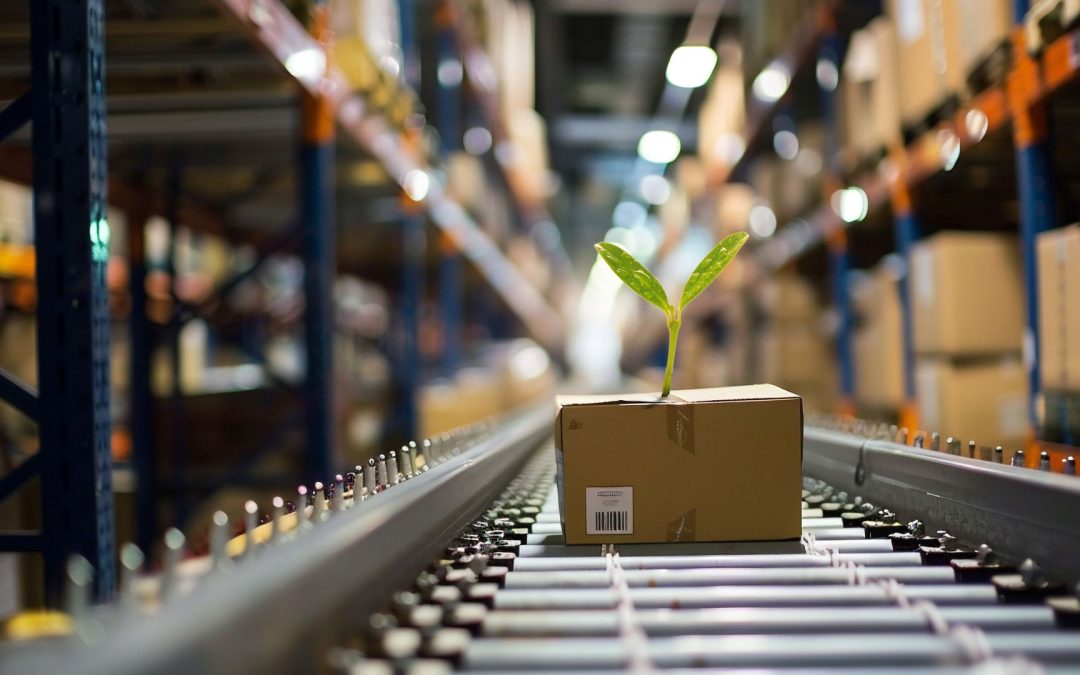In today’s global marketplace, businesses are increasingly recognizing the importance of integrating sustainability into their supply chain management. This shift is driven by the need to balance profitability with environmental responsibility, ensuring long-term success while minimizing ecological impact. Key strategies in this transition include adopting green logistics, embracing sustainable sourcing, and actively working to reduce carbon footprints within supply chains.
Green Logistics: Redefining Transportation and Distribution
Green logistics focuses on minimizing the environmental impact of logistics activities, encompassing the forward and reverse flow of products, information, and services. The goal is to create a sustainable balance between economic and environmental efficiency. This approach emerged in the mid-1980s as companies began to recognize the need for environmentally friendly logistics systems. Implementing green logistics can involve several strategies:
-
Efficient Packing: Using packaging that reduces waste and is recyclable or biodegradable.
-
Route Optimization: Planning transportation routes to minimize fuel consumption and emissions.
-
Load Optimization: Maximizing the load capacity of transport vehicles to reduce the number of trips required.
-
Collaborative Networks: Forming partnerships to share distribution resources, reducing overall environmental impact.
By adopting these practices, companies can reduce pollution, lower transport costs, and enhance their brand image by demonstrating a commitment to environmental stewardship.
Sustainable Sourcing: Building Responsible Supply Chains
Sustainable sourcing involves procuring materials and products in a manner that considers environmental, social, and ethical factors. This practice ensures that suppliers adhere to standards that minimize environmental impact and promote fair labor practices.
Key aspects of sustainable sourcing include:
-
Supplier Evaluation: Assessing suppliers based on their environmental policies, labor practices, and overall sustainability performance.
-
Ethical Material Selection: Choosing materials that are renewable, recycled, or have a lower environmental impact.
-
Transparency and Traceability: Ensuring that the origins of materials are known and that supply chain processes are transparent.
Companies like Li & Fung have been proactive in this area, participating in initiatives such as the Sustainable Apparel Coalition and supporting programs that empower workers in their supply chains.
Reducing Carbon Footprints: Strategies for Emission Reduction
Reducing the carbon footprint within supply chains is crucial for combating climate change and meeting regulatory requirements. Supply chains can account for over 75% of a company’s carbon emissions, making this a critical area for improvement.
Effective strategies include:
-
Adopting Renewable Energy: Utilizing renewable energy sources in manufacturing and logistics operations.
-
Energy-Efficient Technologies: Implementing technologies that reduce energy consumption in warehouses and transportation.
-
Carbon Offsetting: Investing in projects that offset carbon emissions, such as reforestation or renewable energy initiatives.
For instance, companies like PepsiCo are working towards reducing their supply chain emissions by engaging with suppliers and investing in renewable electricity.
TranspoTrade’s Commitment to Sustainable Logistics
TranspoTrade exemplifies the integration of sustainability into supply chain management. As a global logistics provider, they offer comprehensive, end-to-end solutions tailored to meet the unique needs of businesses. Their services include freight forwarding, warehouse and distribution, customs brokerage, and supply chain management.
TranspoTrade’s approach to sustainability includes:
-
Eco-Friendly Transportation: Utilizing transportation methods that reduce environmental impact.
-
Optimized Supply Chain Management: Streamlining supply chain operations to enhance efficiency and reduce carbon footprints.
-
Sustainable Warehousing: Implementing energy-efficient practices in their warehousing solutions.
By integrating sustainability and innovation into their services, TranspoTrade helps clients achieve their business goals while minimizing environmental impact.
Balancing profitability with environmental responsibility in modern supply chains is not only feasible but also essential for long-term success. By embracing green logistics, committing to sustainable sourcing, and actively working to reduce carbon footprints, businesses can meet the growing demands for sustainability from consumers, regulators, and society at large. Companies like TranspoTrade demonstrate that integrating these practices into supply chain management leads to operational efficiencies, cost savings, and a positive brand image, all while contributing to a more sustainable future.

